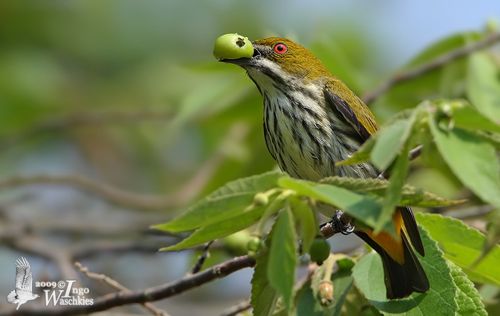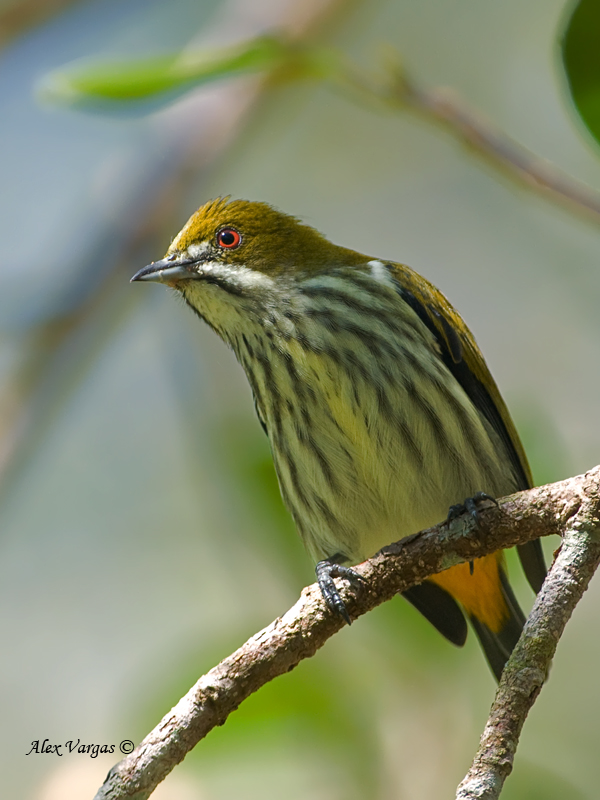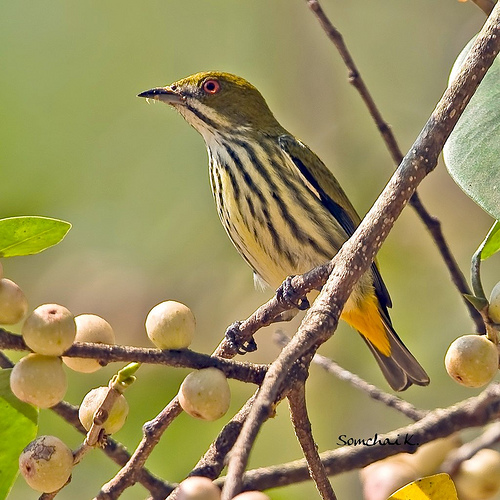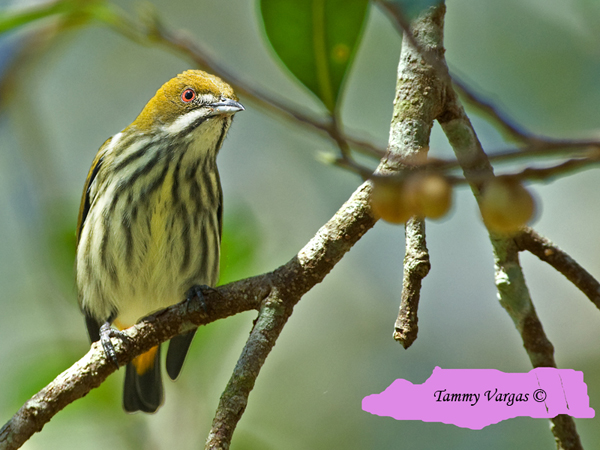
Dicaeum chrysorrheum
TAXONOMY
Dicaeum chrysorrheum Temminck and Laugier, 1829, Java. Two
subspecies.
OTHER COMMON NAMES
French: Dicйe cul-d’or; German: Gelbsteiss-Mistelfresser;
Spanish: Pica Flor de Rabo Amarillo.
PHYSICAL CHARACTERISTICS
4 in (10.2 cm); 0.32 oz (9 g). Bright green upperparts with
white streaked underparts and thin, dark eye stripe.
DISTRIBUTION
D. c. chrysochlore: Nepal to Bhutan, Myanmar, Indochina, and
Thailand; D. c. chrysorrheum: southern Thailand to Sumatra,
Bali, Java, and Borneo.
HABITAT
Lowland and hilly forest up to 6,600 ft (2,000 m) in Sikkim,
woods, orchards, and gardens.
BEHAVIOR
Feeds at all heights. Aggressive.
FEEDING ECOLOGY AND DIET
Food consists of berries of mistletoes, figs, nectar, and insects.
REPRODUCTIVE BIOLOGY
Nest is well-hidden below 26 ft (8 m). Male and female assist
in nest construction and incubation of two or three white eggs
laid April–August.
CONSERVATION STATUS
Not threatened. Common in India, rare elsewhere.
SIGNIFICANCE TO HUMANS
None known.
Other popular Animals
Photo Gallery of - Yellow-vented flowerpecker




 Animalia Life
Animalia Life